The Macro Effect of Micro-Influencers: Why Brands Need a Micro-Influencer Platform
After bouncing around tech start-ups and university literature programs, Joe has finally settled down as Billo’s Head of Content. Joe now spends his days writing ads about ads, teaching clients how to craft killer content, and combing through our web copy with a bold red Sharpie.

The influencer marketing landscape is still (and constantly) evolving. While mega-influencers with millions of followers still hold a certain cachet, brands are increasingly recognizing the power of micro-influencers.
These individuals, with follower counts ranging from 10,000 to 100,000, boast highly engaged communities and a level of authenticity that resonates deeply with their audience.
This shift in focus necessitates a new approach to influencer marketing. Traditional influencer marketing platforms often cater to the needs of big brands and high-profile influencers, leaving micro-influencers underserved. This is where micro-influencer platforms come in, offering a valuable solution for both brands and these rising stars of social media.
The Micro-Influencer Advantage: Building Trust and Engagement
There are several key reasons why brands are turning to micro-influencers:
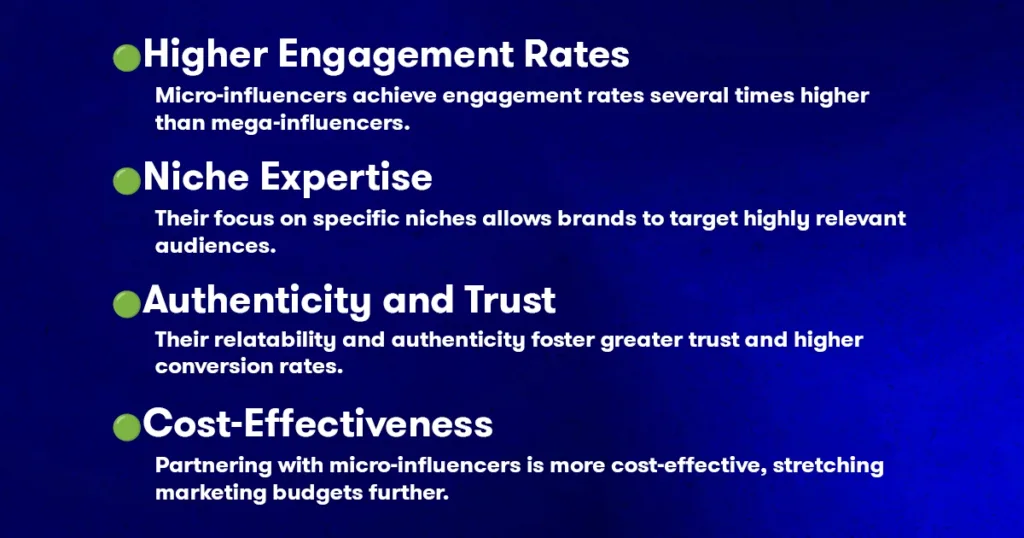
Higher Engagement Rates
Micro-influencers typically have a more engaged audience compared to mega-influencers. Their followers tend to be more receptive to their recommendations and trust their opinions to a greater degree. Studies have shown that engagement rates for micro-influencers can be several times higher than those for mega-influencers.
Niche Expertise
Micro-influencers often focus on specific niches or communities. This allows brands to target a highly relevant audience that is genuinely interested in their products or services.
Authenticity and Trust:
Micro-influencers are seen as more relatable and authentic than their mega-counterparts. Their audiences perceive them as everyday people who they can connect with on a personal level. This authenticity translates into greater trust and a higher likelihood of conversion for brands.
Cost-Effectiveness:
Partnering with micro-influencers is typically more cost-effective than working with mega-influencers. This allows brands to stretch their marketing budgets further and potentially reach a wider audience.
The Challenges of Reaching Micro-Influencers
Despite the many advantages, there are also 3 challenges associated with working with micro-influencers:
- Discovery: Identifying and connecting with relevant micro-influencers can be a time-consuming process. Traditional influencer marketing platforms often focus on mega-influencers, leaving micro-influencers undiscovered.
- Campaign Management: Managing multiple influencer relationships, negotiating contracts, and tracking campaign performance can be a complex task, especially for brands running large-scale campaigns with numerous micro-influencers.
- Content Quality: While micro-influencers often create high-quality content, ensuring consistency and brand alignment across multiple campaigns can be challenging.
The Micro-Influencer Platform: A Win-Win Solution
Micro-influencer platforms address these challenges by providing a dedicated space for brands and micro-influencers to connect and collaborate. Here’s how these platforms benefit both parties:
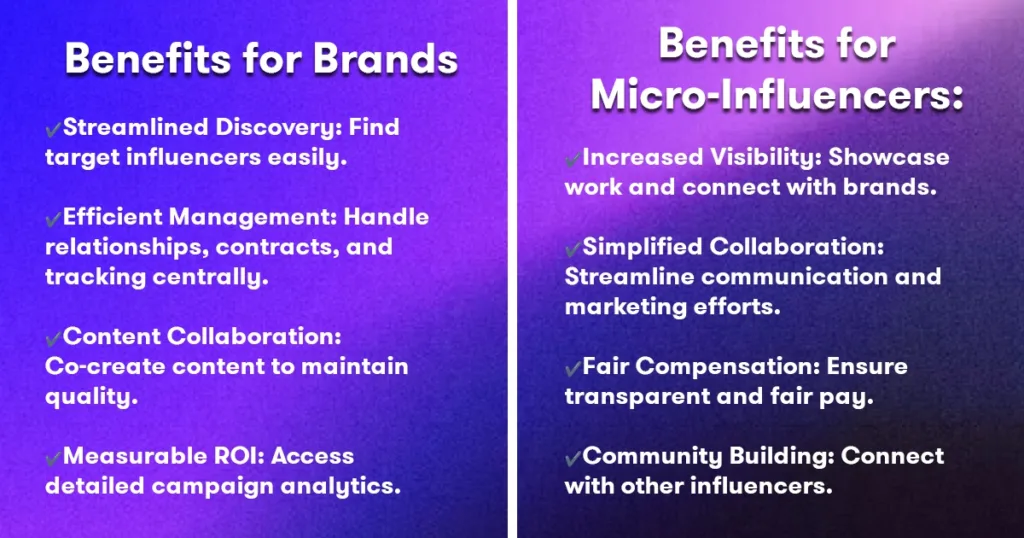
Benefits for Brands:
- Streamlined Discovery: Micro-influencer platforms utilize sophisticated search and filtering tools to help brands find influencers who perfectly align with their target audience and brand identity.
- Efficient Campaign Management: These platforms offer tools to manage influencer relationships, negotiate contracts, and track campaign performance in one central location.
- Content Collaboration: Some platforms provide features that allow brands to collaborate with influencers on content creation, ensuring brand messaging and quality are maintained.
- Measurable ROI: Micro-influencer platforms offer detailed campaign analytics, allowing brands to measure the return on investment (ROI) of their influencer marketing efforts.
Benefits for Micro-Influencers:
- Increased Visibility: Micro-influencer platforms provide a platform for influencers to showcase their work and connect with brands seeking partnerships.
- Simplified Collaboration: The platforms streamline communication and collaboration with brands, making the influencer marketing process more efficient.
- Fair Compensation: Micro-influencer platforms ensure transparent pricing and fair compensation for influencers’ work.
- Community Building: Some platforms offer features that allow influencers to connect and collaborate with other influencers, fostering a sense of community.
Key Considerations When Choosing a Micro-Influencer Platform
With the growing popularity of micro-influencer marketing, there are a number of micro-influencer platforms available. When choosing a platform, consider the following factors:
Target Audience
Does the platform cater to your target industry or niche?
Influencer Network: Does the platform have a large and diverse pool of micro-influencers relevant to your brand?
Campaign Management Features
Does the platform offer the tools you need to manage your influencer marketing campaigns effectively? This could include features like campaign creation, influencer selection, communication tools, contract management, and performance tracking.
Analytics and Reporting
Does the platform provide detailed campaign analytics to track your ROI? Look for metrics such as reach, engagement, impressions, website traffic, and conversion rates.
Pricing
Micro-influencer platforms offer different pricing models, such as subscription fees, pay-per-campaign fees, or commission-based pricing. Choose a model that fits your budget and campaign needs. As your campaigns scale, integrating automated procurement into your workflow can help manage influencer contracts, payments, and approvals more efficiently, keeping costs under control while saving valuable time.
Ease of Use
Consider the platform’s user interface and how easy it is to navigate. You want a platform that is intuitive and user-friendly for both you and the influencers you collaborate with.
Customer Support
Does the platform offer reliable customer support in case you need help?
Micro-Influencer Agencies vs. Micro-Influencer Platforms
While micro-influencer platforms offer a valuable solution, some brands may prefer to work with micro-influencer agencies. Here’s a breakdown of the key differences:
Micro-Influencer Platforms:
- Self-service model: Brands take a more hands-on approach, managing influencer discovery, campaign creation, and communication directly through the platform.
- Cost-effective: Typically more affordable than agencies, with transparent pricing models.
- Large influencer pool: Access to a vast network of micro-influencers across various niches.
- Limited guidance: Brands may require additional resources for strategy development and campaign execution.
Micro-Influencer Agencies:
- Full-service solution: Agencies handle the entire influencer marketing process, from strategy development to campaign execution and reporting.
- Strategic expertise: Agencies offer guidance on campaign strategy, influencer selection, and content creation.
- Personalized service: Dedicated account managers handle all aspects of the campaign, providing ongoing support.
- Higher cost: Agency fees can be more expensive than using a micro-influencer platform.
The best choice between a platform and an agency depends on your specific needs and budget.
If you have the resources and expertise to manage influencer marketing campaigns in-house, a micro-influencer platform may be a suitable option. However, if you require more strategic guidance and support, a micro-influencer agency can be a valuable partner.
Top Micro-Influencer Platforms to Use in 2024
With the ever-growing popularity of micro-influencer marketing, numerous platforms have emerged to cater to this specific niche.
Here’s a breakdown of some of the best micro-influencer platforms to consider in 2024, including some strong contenders catering to different needs:
Billo
This user-friendly platform takes the top spot for its focus on building genuine connections between brands and micro-influencers. Billo fosters a community atmosphere where brands can discover highly engaged micro-influencers passionate about their niche. Their platform offers advanced search and filtering tools, streamlined campaign management functionalities, and built-in collaboration features to ensure successful influencer partnerships.
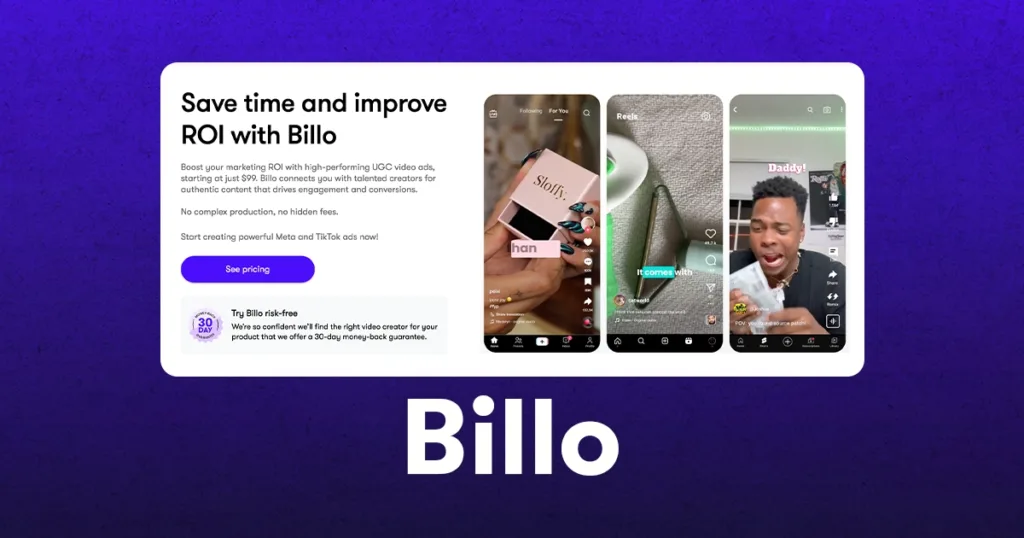
Insense
Following closely behind, Insense offers a robust feature set for campaign management, influencer discovery, and content collaboration. Insense boasts a large and diverse pool of micro-influencers across various industries, making it a great choice for brands seeking a one-stop solution for their micro-influencer marketing needs.
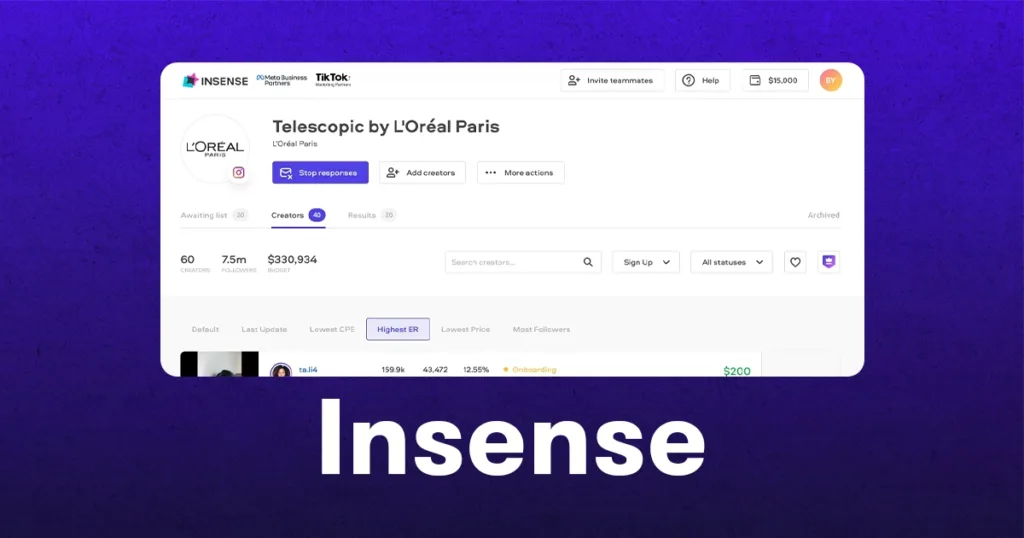
Upfluence
A well-established player in the influencer marketing space, Upfluence offers a comprehensive suite of tools specifically designed for influencer campaigns, including those focused on micro-influencers. Their powerful search and filtering capabilities allow for highly targeted influencer discovery, while their campaign management features streamline collaboration and performance tracking. Upfluence caters to a wider range of influencer sizes, so be sure to refine your searches to find micro-influencers.
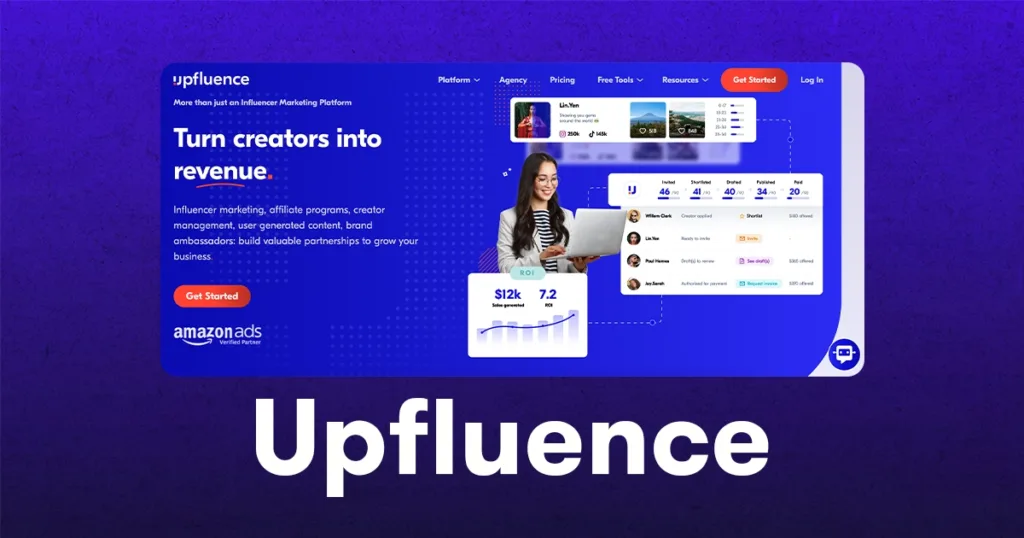
Klear
This data-driven platform goes beyond simply connecting brands with influencers. Klear utilizes advanced analytics to identify the most relevant micro-influencers for your brand based on audience demographics, engagement rates, and brand affinity. This ensures you partner with influencers who genuinely resonate with your target audience.
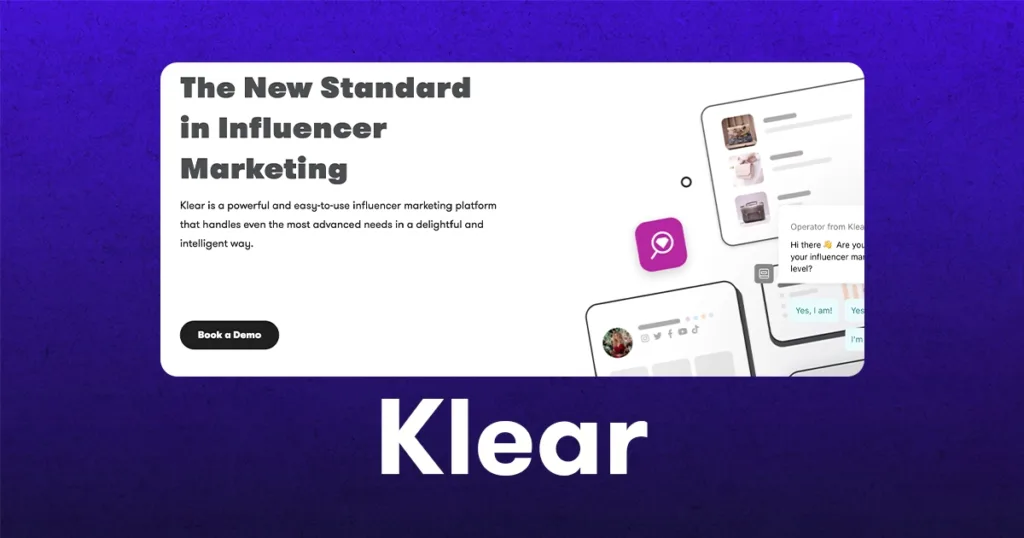
GRIN
Known for its customer relationship management (CRM) functionalities, GRIN also offers a powerful influencer marketing solution with a strong focus on micro-influencers. Their platform facilitates building long-term relationships with influencer partners, fostering a sense of trust and collaboration.
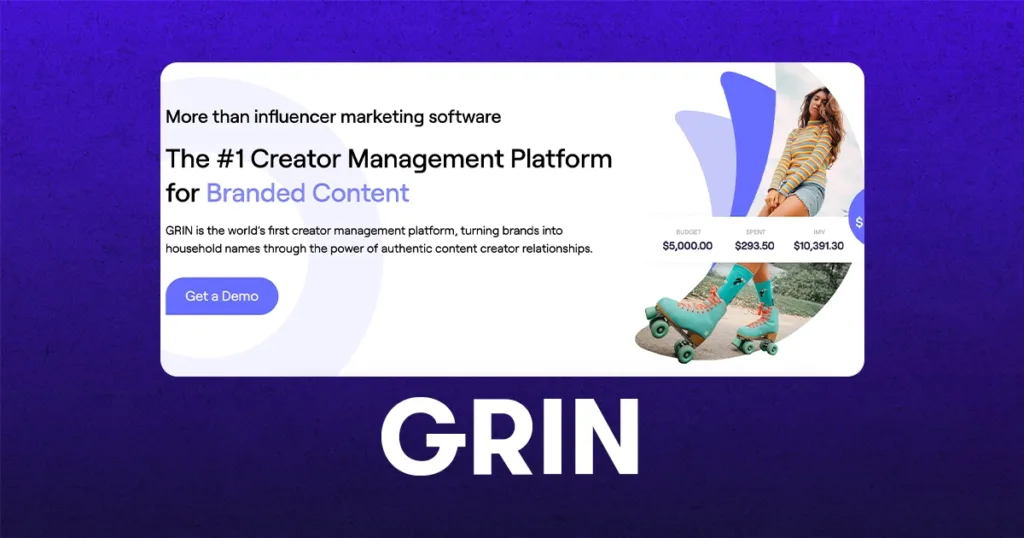
NeoReach
This platform stands out for its fraud detection technology, ensuring you connect with legitimate and reputable micro-influencers. NeoReach offers a user-friendly interface and features robust campaign management tools, making it a strong option for brands seeking a secure and reliable platform for micro-influencer marketing.
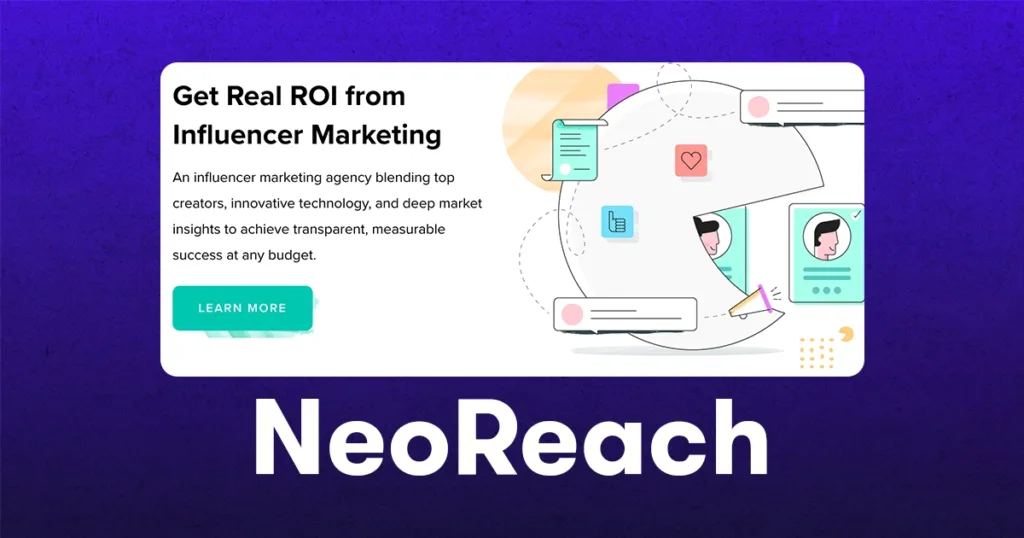
Impulze
This platform boasts a global influencer database spanning various social media platforms like YouTube, Instagram, and TikTok. Impulze utilizes a reverse search engine to help you find the perfect micro-influencer based on specific keywords and demographics. While their focus leans towards agencies, they offer special pricing for smaller businesses interested in short-term micro-influencer campaigns.
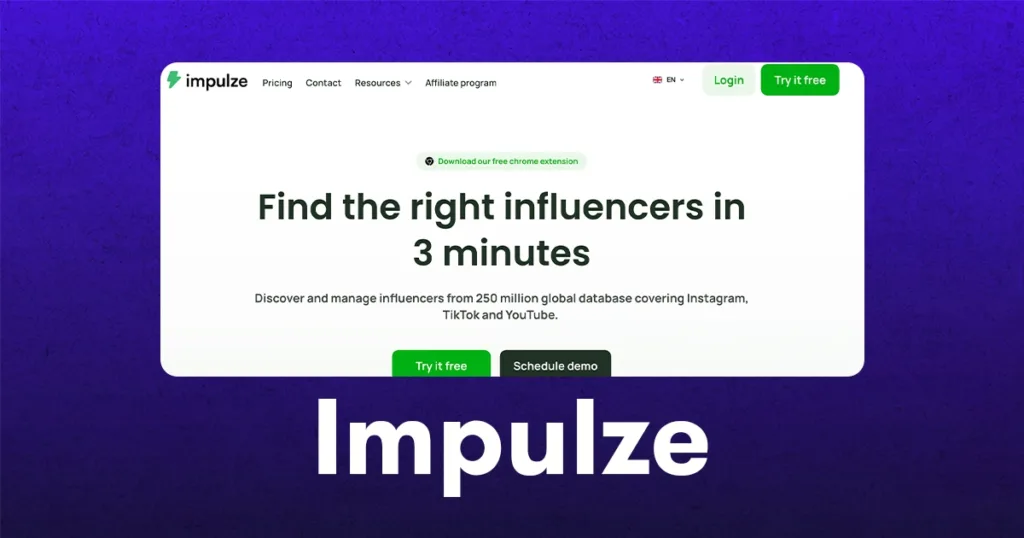
Creator.co
This community-driven platform allows brands to discover micro-influencers based on their content and engagement metrics. Creator.co fosters a direct connection between brands and influencers, enabling them to build relationships and negotiate collaborations organically.
Later Influence™ (formerly LIKEtoKNOW.it)
This platform integrates seamlessly with Shopify, making it a perfect choice for e-commerce brands. Later Influence™ allows influencers to create shoppable content, enabling your target audience to discover and purchase your products directly from influencer posts.
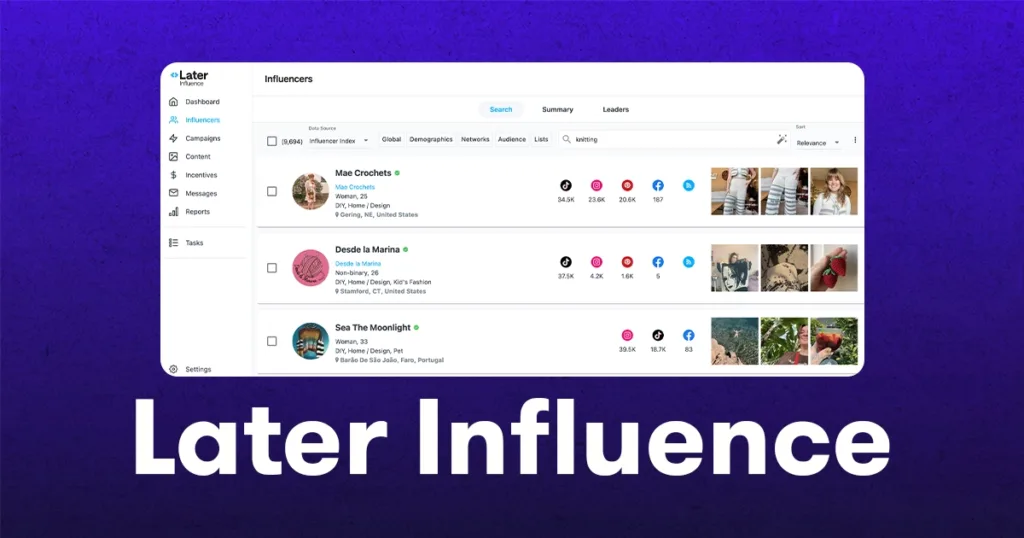
Finding the Right Micro-Influencer Brands
Beyond platforms and agencies, some brands have emerged specifically catering to micro-influencers.
These “micro-influencer brands” are built around communities of micro-influencers who promote and represent the brand. This approach fosters a strong sense of partnership and authenticity, as micro-influencers genuinely believe in the products they endorse.
Here are some of the benefits of partnering with micro-influencer brands:
- Highly engaged communities: Micro-influencer brands leverage the existing trust and influence of their community members.
- Authentic brand advocacy: Micro-influencers are genuinely passionate about the brand, leading to more authentic and relatable content.
- Long-term partnerships: Micro-influencer brands often foster long-term relationships with their influencer partners, leading to consistent brand messaging and audience engagement.
Examples of Micro-Influencer Brands:
Outdoor Voices
An athletic apparel brand known for its focus on community building and partnering with micro-influencers who embody the brand’s active lifestyle.
HiSmile
A teeth whitening brand that leverages partnerships with micro-influencers in the beauty and wellness space.
Dollar Shave Club
A men’s grooming brand that rose to prominence through its humorous marketing campaigns featuring micro-influencers.
The Future of Influencer Marketing: A Collaborative Ecosystem
Micro-influencers are poised to play an increasingly important role in the future of influencer marketing.
The rise of micro-influencer platforms, agencies, and brands signifies a shift towards a more collaborative ecosystem. In this ecosystem, brands, influencers, and platforms work together to create authentic and engaging content that resonates with target audiences.
Here are some key trends to watch in the future of micro-influencer marketing:
- Increased focus on micro-influencers: As brands recognize the effectiveness of micro-influencers, we can expect to see a continued rise in their popularity.
- Rise of niche micro-influencers: Micro-influencers with hyper-specific niches will become even more valuable for brands targeting highly focused audiences.
- Focus on influencer authenticity: Consumers are increasingly discerning, and brands will prioritize partnering with influencers who create genuine and authentic content.
- Data-driven influencer marketing: Micro-influencer platforms and agencies will leverage data analytics to optimize campaign performance and measure ROI
Beyond the Platform: Influencer Collab Tools and Additional Resources
While micro-influencer platforms offer a robust solution for campaign management and discovery, there are additional tools and resources that can enhance your micro-influencer marketing efforts:
Influencer Collab Platforms
These platforms go beyond simply connecting brands and influencers. They provide features specifically designed to facilitate collaboration on content creation. This can include tools for brainstorming ideas, sharing assets, and managing feedback. A popular influencer collab platform is Julius.
Social Listening Tools:
Staying informed about current trends and influencer conversations is crucial. Social listening tools allow you to track brand mentions, identify relevant influencers, and gain insights into audience sentiment. Consider tools like Brandwatch or Sprout Social.
Influencer Marketplaces:
These platforms function like online marketplaces, allowing brands to post campaign briefs and browse influencer profiles with detailed analytics. This can be a good option for finding micro-influencers in specific niches. Look into platforms like Traackr.
Micro-Influencer Case Studies
Learning from successful micro-influencer marketing campaigns can be invaluable. Look for industry reports, case studies, and blog posts that showcase how brands have leveraged micro-influencers to achieve their marketing goals.
The Upside of Micro-Influencers in Today’s Marketing Landscape
The rise of micro-influencers represents a significant shift in the influencer marketing landscape. These individuals offer brands a powerful way to reach highly engaged audiences and build authentic connections.
By leveraging micro-influencer platforms, agencies, and the right tools, brands can develop successful influencer marketing campaigns that drive real results.
As the influencer marketing space continues to evolve, the focus will undoubtedly remain on building genuine relationships and fostering trust between brands, influencers, and consumers.
By embracing the power of micro-influencers and utilizing the available resources, brands can create impactful marketing campaigns that resonate with their target audience and achieve their marketing objectives.
Head of Content
After bouncing around tech start-ups and university literature programs, Joe has finally settled down as Billo’s Head of Content. Joe now spends his days writing ads about ads, teaching clients how to craft killer content, and combing through our web copy with a bold red Sharpie.

Authentic creator videos, powered by real performance data
22,000+ brands use Billo to turn UGC into high-ROAS video ads.
How to Find Micro Influencers for Your Brand’s...
Looking for micro influencers for your brand’s next campaign? You’re [...]...
Read full articleBeyond the Ad: Influencer Marketing Services for...
Sponsored posts alone won’t cut it in 2025. Global influencer-marketing [...]...
Read full articleTop 20 TikTok Influencers for 2025
Having rapidly evolved from a short-form video app predominantly used [...]...
Read full article



